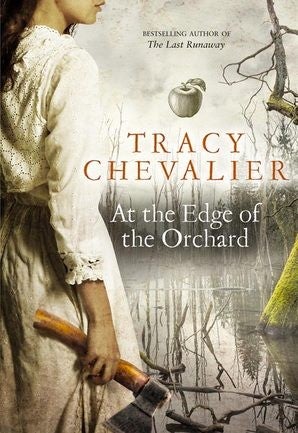Tracy Chevalier, At the Edge of the Orchard: 'Vivid right to its core', book review
The Black Swamp is as inhospitable as it sounds, which carry off several of the children and leave the parents too weak to work

Tracy Chevalier’s new novel, like her previous one, The Last Runaway, is set in mid 19th-century Ohio, but in an entirely different landscape, the Black Swamp, where the Goodenough family – James, Sadie and their large brood – have staked out a patch of land to grow apples for a living.
The Black Swamp is as inhospitable as it sounds, not least given the annual bouts of swamp fever, which carry off several of the children and leave the parents too weak to work.
The stress on the once happy-go-lucky Sadie transforms her into a quarrelsome drunk who blames her husband for all their difficulties. The orchard is their battleground. She despises the “eaters” that James dotes upon, preferring the “spitters” they ferment to make applejack.
The disintegration of their marriage is watched anxiously by their gentle son, Robert, and Martha, the shy daughter with the “mouse paws” whom Sadie bullies.
What happens next will shatter family life and propel Robert out into the world to make a living.
The storyline is a fairly simple one, its principle dynamic is one of separation and reunion, though the telling of it is cunning.
The vividness of character and setting, one quickly recognises, are more important to the book. Early on, the author solicits a certain sympathy for the unpleasant Sadie.
She’s like a plant uprooted from sunnier soil and cannot thrive in this arduous place where marriage and children have thrust her.
Careful detail of the apple-farming and absorbing accounts of Robert’s subsequent career as a plant hunter made this exhaustively researched novel a particular delight for me.
Chevalier’s prose is by turns muscular, raw and sumptuous.
She knows her characters so well that she can write letters in Robert’s uneducated style as convincingly as she speaks in Sadie’s rough, alcohol-laced voice and Martha’s timid one. Not for her the temptation of a simple third-person account.
The story is imbued with the scents of apples and fresh-cut wood, and there’s a terrific sense of the spirit of the teeming hordes on the hard pioneer trails west, hoping to make their fortunes panning for gold, ploughing the land, or rearing cattle.
The hardback is so beautifully designed that the whole reading experience is as rich a pleasure as the novel itself.
Tracy Chevalier, At the Edge of the Orchard. Borough Press £16.99
Rachel Hore’s latest novel, ‘The House on Bellevue Gardens’, is published by Simon & Schuster, £14.99
Join our commenting forum
Join thought-provoking conversations, follow other Independent readers and see their replies
Comments